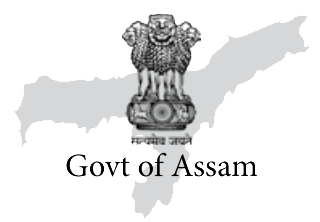he composite and social life of an Assamese is like the rainbow, full of the seven colours of this natural wonder. Scholar Dimbeswar Neog had once said that the wonders of the Universe lie in its microcosm. Since times immemorial, the original inhabitants of this land have managed to preserve their tradition and culture despite the whirlwind of time and change, and have continued to be flag bearers of these practices.
In the 13th century, crossing the Patkai range Prince Sui Ka Pha entered Assam. This was the beginning of a very different kind of assimilation: of people, culture, tradition and history. Winding up the seven existing kingdoms then, he merged them into one. This was the advent of a series of cultural exchanges among the sons of the soil which led to the establishment of the greater Assamese society.
In the 15th century, when Mahapurush Srimanta Sankardev started preaching his Ek Sharan Naam philosophy, the world of culture took on a different role. Songs, pada, drama-bhaona, instruments and dances were composed and designed to provide the existing Assamese society a cultural uplift. Our society has ever enjoyed a pride of place in the cultural firmaments. The light that was lit has been held aloft with pride by generations across the Brahmaputra and Barak Valley. This continued during the time of Sankardev’s most important disciple Sri Sri Madhavdev, and the Bhakti Movement.
Later, during the reign of the Britishers, cultural and literary stalwarts like Padmanath Gohain Baruah, Lakshminath Bezbaruah, Ambikagiri Raichoudhury, Parvati Prasad Barua, Jyoti Prasad Agarwala, Bishnu Prasad Rabha, Moghai Ojah adorned the Assamese society with ingredients of modernity. It was then the turn of the likes of Dr Bhupen Hazarika, Dr Maheswar Neog, Rasheswar Saikia Barbayan, et al., to enlighten the Assamese culture, and its rich oeuvre. The result is that the present-day Assamese society boasts of an extremely proud culture that has managed to make a mark across the proverbial seven seas.
The present State Government led by the dynamic Chief Minister Dr. Himanta Biswa Sarma has continued to propel the people of Assam, and its culture on the forefront of civilisation and real progress. Education, Health, Sports, Industry, and Culture have enjoyed undivided attention of the Government. The idea is to spot talents hidden amidst us cutting across regions, and geography and give them a platform where they can make a mark and make a difference to the world. It is with this idea that the ongoing Assam Sanskritik Mahasangram 2023-2024 has been launched under the Department of Culture. In due course we will witness the coming-of-age of talents residing in the hinterland, especially among the youths. I am sure they will be the one at the forefront of this cultural movement.
Rupkonwar Jyoti Prasad Agarwala had written something to this effect (which I have translated roughly as) “On the banks of the Luit, and the beaten tracks of Assam’s villages, will emerge a force to explore the world.’’
This Mahasangram is akin to a path of an enlightened journey. Six disciplines, including Jyoti Sangeet, Bishnu Rabha Sangeet, Bhupendra Sangeet, Rabindra Sangeet, along with Group Bihu dance and Folk Dance (Group) of Assam, are part of the Sanskritik Mahasangram. It has been organised in three stages: Ka Section – 12 to 18 years; Kha Section – 19 to 24 years; Ga Section – 25 to 35 years. Besides, it is being organised at five levels:
Gaon Panchayat, Ward, VCDC and MAC Level – November 10 to November 30, 2023. Over 7.62 lakh enthusiasts have registered themselves.
At the Assembly Constituency Level, the competition will begin from December 5 to December 20, 2023.
District Level – January 2 to January 20, 2024
State Level – January 28 to February 6, 2024
Grand Finale – February 7, 2024 (At the Sarusajai Sports Complex)
We have decided to award certificates at the GP/Ward/VCDC/MAC level while trophies and certificates will be bestowed on the winners at the Assembly Constituency, and district levels. At the State level, we have decided to award cash prizes worth ₹1 lakh, ₹75,000, and ₹50,000 to the first three winners respectively.
We are sure that youths will be able to discover themselves and the talent innate by using the Assam Sanskritik Mahasangram as a stage. Pursuits like these implant in children creative seeds, which, when nurtured, can result in their intellectual growth. They also act as a calming force in their tumultuous minds. Another outcome of this Mahasangram will be that they will rediscover the cultural greats of yesteryears, and thereby enliven the cultural scenario of Assam, and the world.













